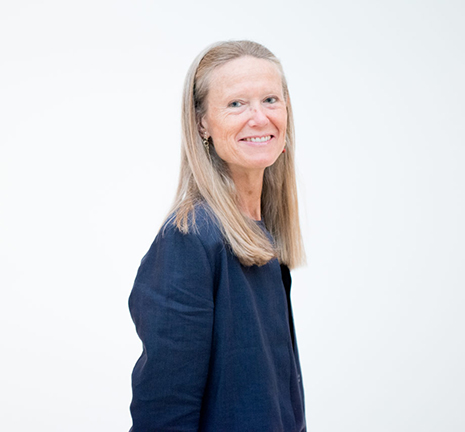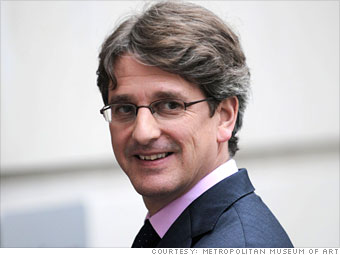In this week’s New Yorker magazine, Calvin Tomkins has his crack at explaining the fraught past relationship between the Metropolitan Museum of Art* and contemporary art and plans for the future in an article headlined The Met and the Now. It is a feel-good article, all but a puff piece. Think of it as an antidote to the article in The New York Times several weeks back, headlined Becoming Modern: The Met’s Mission at the Breuer Building. That one had tongues wagging and, I’m told by Met insiders, left both trustees and the administration trying to figure out how to counter it.
 Why? The worst part had contemporary art chief Sheena Wagstaff (left) explaining the high turnover among her curators in her department by essentially saying that she got rid of the Met’s mediocre staff. Then, director Tom Campbell (right) made matters worse by saying:
Why? The worst part had contemporary art chief Sheena Wagstaff (left) explaining the high turnover among her curators in her department by essentially saying that she got rid of the Met’s mediocre staff. Then, director Tom Campbell (right) made matters worse by saying:
“You tell your American curators to stop being such whiners,†he snapped. “This is a very competitive institution. You succeed by being good.â€
I could see that we might be going through a lot of rubbish out there, but, at the same time, I felt there was a sort of neo-Renaissance that the Met should be part of.†Personally, he has said, he likes contemporary art: “I might even buy it, if I had the money.â€
I am glad Campbell admitted that there’s “a lot of rubbish out there,” and I only wish I could see what he calls a neo-Renaissance. Sometimes I walk around contemporary art fairs and among the galleries of Chelsea thinking we must be in a dark age for art. That’s personal, though: there’s some good, even great, art out there. I just wish there were more of it.Â
Re: past Met acquisitions:
[Bill] Lieberman [a former head of the Met’s contemporary department], who was unwilling to go after anything that he thought MoMA coveted, acquired a surprising number of figurative paintings by contemporary artists whose names do not resonate today, and whose works reside in the basement.
This is no surprise; other museum directors tell me they have storerooms of contemporary art they’d like to deaccession, too. They won’t while the artists are still alive.Â
[the] Department of Modern and Contemporary Art, which, divested of its nineteenth-century impedimenta, was now the Met’s principal area of growth.
This is indeed what Campbell thinks, I have heard from those whining curators. which is too bad. The Met should acquire contemporary art, of course. But, at a time when art has gotten so expensive, acquisitions–especially purchases–must be opportunistic. The Met must remain flexible about what it acquires–of a great, say, Caillebotte, or whatever, comes along that fills a gap, it should go for it. Â
“The other day, someone said to me, ‘You have the best job in the world,’ †Wagstaff announced. “And I said, ‘Actually, I do.’ It has such enormous potential for modern and contemporary art, and ultimately for artists. And the opportunity to work on joint projects with the Met’s world-class scholars in other fields is the most thrilling thing in the world.â€
 Of this statement, I heartily approve. Wagstaff has put her finger on what can make the Met’s contemporary department distinctive.Â
Of this statement, I heartily approve. Wagstaff has put her finger on what can make the Met’s contemporary department distinctive.Â
The art historian Hal Foster, who teaches at Princeton and knows Wagstaff well, told me that her program to connect modern and contemporary to historical art is “exactly what New York needs at this moment, when there’s such a stress on presentness and the fascination with ‘now.’ â€
Again, yes, I agree wholeheartedly.Â
“What the Met needs to do is position itself as a potential recipient for major gifts in this area,†Campbell told me. “I can’t raise a hundred million dollars for a single work of art, but what I can do is raise six hundred million to rebuild the modern wing. That’s easier to do. The Met takes great pride in putting supporters’ names on galleries. And if we rebuild the wing not all the gifts will go to MoMA.â€
Another point on which we agree.Â
“They’re trying something new,†Massimiliano Gioni, the artistic director of the New Museum, said approvingly. “Instead of using the MoMA model, of top-quality works shown to illustrate the history of style, they’re using lesser-known [contemporary] works that are expressions of a culture—which is what you get in the Met’s Roman galleries and the Egyptian galleries. It requires a different understanding of what art is.â€
I’m not sure about this one. The Met should not settle for lesser works; its storerooms overflow already.Â
Contemporary art has overwhelmed the current market, but it is still a colossal risk, if only because there are so few standards to judge it by. “The language of contemporary art is always changing,†Michael Govan, the director of the Los Angeles County Museum of Art, said recently. “Our frame of reference changes. Things are diversifying. Being an encyclopedia of anything is more and more untenable.†The Met is placing a big bet on modern and contemporary art at a time when nobody can predict what art will be—or mean—to future generations.
The fact that nobody seems to know what art is anymore makes a curator’s job all the more difficult. Does anyone still subscribe to Alfred Barr’s definition of what he and his colleagues at MoMA were doing as “the conscientious, continuous, resolute distinction of quality from mediocrity� Many curators would say that they do, but, as any Chelsea gallery-goer can attest, a vast amount of mediocre art is being shown these days, and some of it commands absurdly high prices at auction. The unfashionable, élitist notion of quality doesn’t really go away, and our need for museums to sift, select, and make illuminating judgments about recent art has never been more acute.
Oh, yes–someone had to say this. I am tired of hearing that there’s no hierarchy in art, that all art is equal. Not true.Â
*I consult to a foundation that supports the Met.
